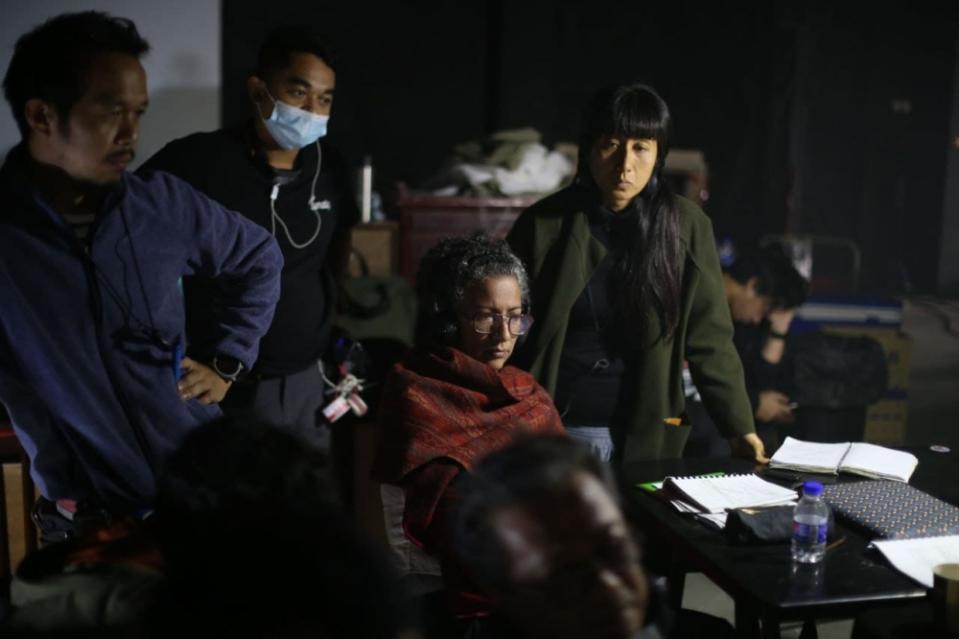Compulsory screening review, grant audits, FFM's return : Finas set for 2024

KUALA LUMPUR, Dec 29 — The Malaysian film industry has shown much promise over the past year with several films grabbing the spotlight both domestically and internationally.
From impressive domestic box-office by the likes of Polis Evo 3 and Imaginur to the global attention of Malaysian productions such as Tiger Stripes and Abang Adik, there is still much room for growth.
Responsible for the development and progress of the local film industry is the National Film Development Corporation (Finas).
From policies and funds, it plays a pivotal role in shaping the direction of the industry. but is it resulting in better film quality, production values and improving the overall landscape of the filming industry?
Finas chairman Datuk Kamil Othman who was appointed to the position in February this year says there’s a need to fine tune existing Finas existing policies and regulations.

According to Kamil, producers should realise they cannot simply use the protection of the Compulsory Screening Scheme to make low quality films. — Picture via Pexels.com.
Do we really need 'Skim Wajib Tayang'?
Kamil said that one of the policies currently being reviewed is the compulsory screening scheme (Skim Wajib Tayang) which was first enforced back in June 2005.
It was put in place to ensure Malaysian made films were given adequate opportunity and screen time in local cinemas by exhibitors.
“Wajib Tayang was about making sure our cinema operators screen our films.
“So, it all began with a footing of mistrusts.
“It was assumed that if there were no Wajib Tayang, local cinema operators wouldn’t screen local films,” he said.
“That is the perception I want to change.
“The underlying misconception is that Wajib Tayang is an imposition, we imposed it and exhibitors have no choice but to screen it.
“I would rather the screening of local films become a choice for operators.”
Kamil said that in order to achieve this understanding, producers should realise they cannot simply use the protection offered b y Wajib Tayang to make films of low quality as local exhibitors need to consider commercial prospects too.
“In other countries, the measurement will be on whether cinemas will pick up your film or not but that’s not the case here in Malaysia because we have Wajib Tayang.
“So, it doesn’t matter if your film is bad, it will still be screened.
“The Wajib Tayang can be removed but the first thing we need to make sure is that there are enough quality films being made so cinema operators will pick it up more naturally and with confidence.”

There have been cases of Finas funds misappropriation from underpaying production crews to mark ups on filming equipment. — Picture courtesy of Lumatic Films.
Audit for grant receivers
While there are numerous funds and grants provided by Finas for local filmmakers, including the Digital Content Fund (DKD), many end-products are often disappointing.
There are films that have received both marketing and production grants could hardly manage to rake in decent collections due to lack of audiences who, according to Kamil, are becoming more discerning in what to watch these days.
One example is A.R Badul’s Vik2ria Secret which received a RM500,000 DKD grant but only managed to rake in around RM5,000 in gross collection from a paying audience of less than 400.
He pointed out that this is one of the long-standing issues when it comes to the grants and admitted that there are also good films that were not successful due to inefficient marketing.
“For poorly made films, sometimes I feel like going to all these filmmakers and asking them personally like ‘have you seen your own film? Is this the kind of film that you want to make or is it something that happened by accident?’
“I would really like to know.
“You came to the Finas saying that you’re going to make a film and you must have had a good idea on paper for you to be granted the funds in the first place, but what happened after you received the funds?” Kamil questions.
“Even if Finas sent someone to check on their shooting progress, we would only see the result after the film was done.
“We can’t tell the outcome of the product until it is at its final cut.”
Hence, Kamil is keen on reintroducing audits for grant receiver’s production costs which was implemented briefly during his time as director general of Finas back in 2015.
Currently, Finas grant applicants are only evaluated at the application stage, to ensure that they are capable technically, artistically and financially to produce the film as a saleable product - a system which has many weaknesses that needs to be looked into.
The reason for the production costs audit proposal is to prevent any further misuse of Finas funds by recipients.
According to him, there have been cases of misappropriation.
This includes underpaying production crew, markups on filming equipment costs as well as use of unlicensed visual effect software in order to cut costs on post production.
“I want it to be done the right way, and an audit is necessary.
“If I gave you half a million Ringgit, Is it wrong if I send an auditor to check on how it was spent?
“It’s the taxpayers money anyway,” he said, adding that the auditing should be done especially for films with budgets higher than RM1.5 million.
Kamil also said that there will be a reshuffling of Finas panel members in charge of evaluating proposals for projects in 2024.

2024, Finas will be focusing more on co-production with Asian countries. — Picture courtesy of Apparat
Plans for 2024
Finas plans for 2024 also include focusing more on co-production with Asian countries.
This is through the inception of the Asian Film Alliance Network (AFAN) back in May this year which comprise the Korean Film Council, Indonesian Film Board, Film Development Council of the Philippines, Infocomm Media Development Authority Singapore Film Commision, Mongolian National Film Council, Taiwan Creative Content Agency and Finas.
The collective of seven asian countries which was launched at the Cannes Film Market aims to spearhead initiatives that will aim to foster co-productions, co-financing, technological exchanges, training and education, and cultural workshops as well as screenings.
Kamil also said that they will also keep their focus on the Industry Development Grants where funds are allocated for short films, script development, documentaries as well as filming research for universities.
Meanwhile, he also confirmed that the Malaysian Film Festival (FFM) will be making a return next year after its notable absence this year.
Kamil said that there are big plans for FFM33, not just be an awards night but a proper week-long festival filled with screenings of selected films, masterclasses and short films competitions.
“This year is a very good year for Malaysian films. So it is our job now to find the next Tiger Stripes, Prebet Sapu, Kaki Bakar or Abang Adik.”



